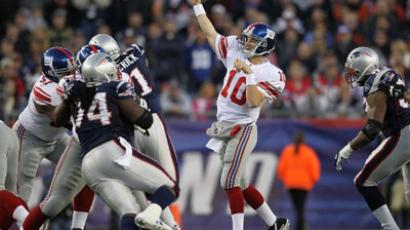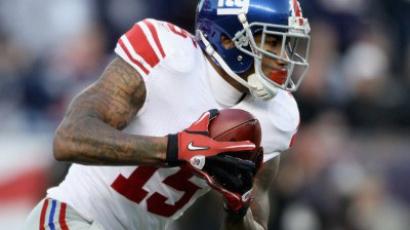Activists demand to strip NFL of nonprofit status
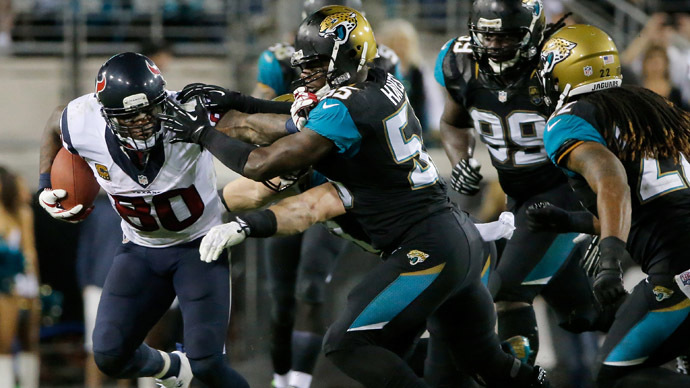
It is one of America’s most beloved past times. Every year, when the weather gets cold and the days get shorter millions gather around their television sets to cheer on their favorite football teams.
From the Grid Iron to the Gravy Train: How the NFL Scored a Nonprofit Status
Those same fans funnel billions upon billions of dollars into the industry to buy everything from tickets to memorabilia. In fact, the National Football League collects upwards of $9 billion in revenue each year, making the league the most lucrative in the world according to Forbes.
On top of the massive profits the teams enjoy, the league also scores big with tax breaks handed down from the federal government, specifically income taxes. The teams themselves are considered for-profit entities and pay taxes -- however, the leagues, which set the rules, negotiate contracts, discipline players and come up with a programming schedule, do not.
“The NFL is exempt for federal and state income tax under section 501c6 of the federal tax code, which is very different from the sections that exempt charities and other philanthropic organizations,” Chair of the Nonprofit Organizations Practice at Venable Law Firm, Jeff Tenenbaum explains, “A 501c6 organization, which is typically reserved for trade and professional associations and chambers of commerce and some sports leagues, is a category that… carries with it exemption from paying federal and state corporate income tax on your net income.”
And, the NFL isn’t alone. The National Hockey League, the Professional Golfers’ Association, the U.S. Tennis Association and numerous other sporting leagues also enjoy similar statuses. So, how did such a situation come about?
Since the 1940’s, the NFL has received some tax breaks from federal and state governments. However, it wasn’t until 1966 that language was formally added to the national tax code which officially protected professional football. At the time, there were not one but two professional football leagues: the NFL and the American Football League or the AFL. On June 8, 1966, the two leagues formally announced plans to merge. The first ever Super Bowl was also held that very season. In order to merge, the leagues had to approach Congress to ask for an exemption to antitrust laws, which prohibit monopolies that limit competition.
Nitty Gritty Tax Law
After a lobbying blitz by both the NFL and the AFL, Congress eventually agreed to allow the two leagues to merge. During that same time, football lobbyists also pushed for the NFL to be explicitly added to federal tax code as a trade association. As a result, Section 6 of Unites States Code 26 regarding 501 exemptions was modified to read as such:
(6)Business leagues, chambers of commerce, real-estate boards, boards of trade, or professional football leagues (whether or not administering a pension fund for football players), not organized for profit and no part of the net earnings of which inures to the benefit of any private shareholder or individual.
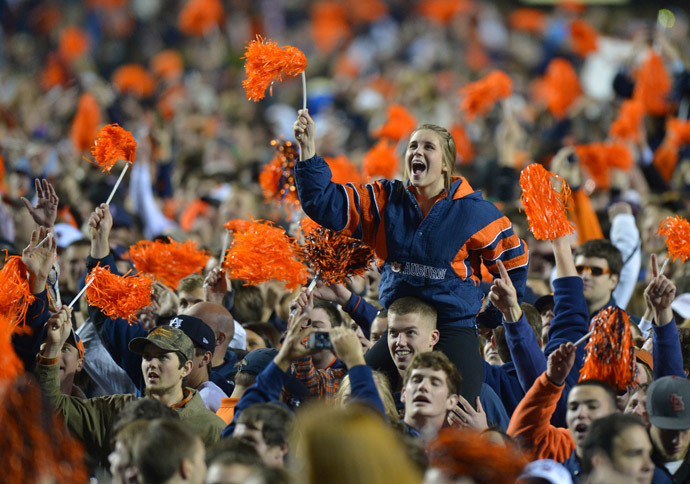
According to the IRS, in order to be considered a trade association and, therefore, tax exempt, the league’s activities must:
“Be devoted to the improvement of business conditions of one or more lines of business as distinguished from the performance of particular services for individual persons. It must be shown that the conditions of a particular trade or the interests of the community will be advanced. Merely indicating the name of the organization or the object of the local statute under which it is created is not enough to demonstrate the required general purpose.”
In its 2010 990 tax return form, the NFL described itself as a “trade association promoting interests of its 32 member clubs.” Whether or not promoting the interests of 32 member clubs equates to improving business condition is up to the IRS to decide.
Because the phrase ‘professional football leagues’ was added to the text, the NFL is protected, but the Internal Revenue Service takes that to mean other sporting leagues are as well. This is a notion Tenenbaum himself sees as suspect.
“I think the legitimate question is, ‘does the fact that they were written in so specifically, with some very particular, specific language, does that mean that Congress actually meant to exempt the NFL from taxes under section 501c6 or was Congress simply saying a professional sports league that broadly promotes a particular sport, that’s another category of what we mean by 501c6, the NFL may or may not be one of those. We really don’t know the answer to that.”
A Look at the NFL’s Playbook
To truly understand whether or not the NFL meets those criteria, a basic understanding of the organization’s structure is required.
The league’s origin goes all the way back to September 17, 1920, when team owners and football enthusiasts came together in Canton, Ohio to organize a central group that makes and enforces rules. Today, the NFL represents 32 teams in two conferences: the National Football Conference (NFC) and the American Football Conference (AFC).
The organization's main duties include hiring league employees, disciplining people who break the rules, negotiating television deals, distributing money from those television profits to teams, suspending players and coaches, handing down fines and, in serious cases, canceling contracts or striping teams of draft picks.
In order to be able to conduct its business, each team pays annual dues. According to Forbes, only about $500,000 of the league's money comes in annually from fines and penalties and less than $200,000 comes from investment income. Teams pay the organization about $6 million in dues annually. However, as SportsFans.org reports, team owners are not taxed on that money since it is considered a donation to a nonprofit organization.
In spite of the fact that the NFL in its entirety is the most profitable sport in the US, the league itself is actually operating in the red. In 2011 alone, the NFL reported $77 million in losses.
“The expenses outweigh the revenues so it is actually losing money. So the irony is if it were a taxable entity it wouldn’t be paying any tax because, like any tax-paying entity, if you exceed your revenues you don’t pay any tax, there’s no net income,” Tenenbaum points out.
But, how can a league which brings in over $250 million annually still report losses year after year? That's probably because the majority of the NFL's money goes to executives' contracts.
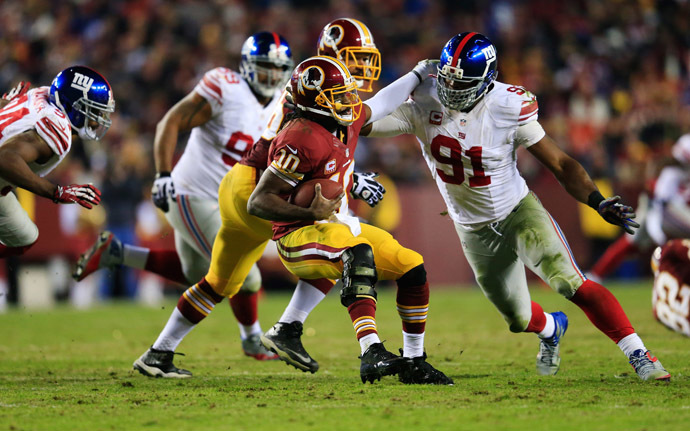
Roger Goodell Makes How Much?!
According to IRS salary transparency rules, tax exempt organizations can pay no more than fair market value compensation for services. It is also because of the fact that the NFL files taxes as a trade association that the public gets to know exactly what its executives make.
Those very tax forms reveal that current NFL Commissioner Roger Goodell made nearly $29.5 million in 2011 alone. That’s almost triple the $11.6 million he pulled the year before. Those big checks almost guarantee that Goodell is perhaps the only sports commissioner who makes as much as or more money than the athletes themselves. New England Patriots quarterback Tom Brady, for instance, made a mere $18 million by comparison, and former Indianapolis Colts Quarterback Peyton Manning had a salary of $23 million in 2011.
RT America reached out to the NFL, NHL as well as the PGA on multiple occasions. None of the leagues chose to comment on their tax exempt status.
Flag on the Play: Petitioning the NFL’s Tax-Exempt Status
Because of the revenues the NFL as a whole pulls in along with the massive salaries its executives enjoy, a number of people have spoken out against the tax exempt status, even fans themselves.
Lynda Woolard is a longtime New Orleans Saints fan and yet she started a petition on Change.org to call for an end to the NFL’s nonprofit status.
“I started the petition because I saw a real imbalance of power in the league," Woolard told RT. “So, to me, I was trying to think of a way to really give the fans a voice.”
So far, the petition has been signed by over 304,000 people. There’s also a letter attached to the bottom of the petition for the public to send to members of Congress, which a number of people have taken advantage of. Woolard, who runs a nonprofit charitable foundation herself, says the biggest obstacle to overcome is lack of awareness. But she has gotten ample support.
“Sports Fans Coalition at Sportsfans.org contact me and say they would like to go to Washington on the petition signers’ behalf and try to find someone to sign on to put this into the upcoming budget hearings that are coming up. So we do have a Champion in Washington.”
The Senator Who Called ‘Off-Sides’
The Sports Fans Coalition isn’t the only group in Washington that’s taking the NFL to task. Republican Senator Tom Coburn released a Government Waste Book in 2012 detailing just how much money this sports loophole is draining from the American economy. Coburn argues that taxpayers are losing millions annually.
“Hardworking taxpayers should not be forced to provide funding to offset tax giveaways to lucrative major professional sports teams and leagues,” the Government Waste Book reads, “Based on publicly available information about the NFL and NHL alone, barring major leagues from using the non-profit status may generate at least $91 million of federal revenue every year.”
In April, Coburn introduced an amendment to Senate bill 743 or the Marketplace Fairness Act of 2013, which would amend the IRS tax code. The bill passed the Senate in May, though Coburn’s amendment never came up for a vote.

But that hasn’t stopped the Oklahoma Senator from continuing this battle. On September 18th of this year, Senator Coburn introduced his newest initiative to end the tax-exempt status for professional sports called the Properly Reducing Over Exemptions for Sports, or PRO Sports, Act. The goal is to amend the Internal Revenue Code of 1986 to exclude major professional sports leagues from qualifying as tax-exempt organizations. If passed, all professional sporting organizations with annual revenue that exceeds $10 million would be forced to pay federal income taxes. The bill has been referred to committee but has a virtually nonexistent chance of passing by the end of the year.
Even if the PRO Sports act did eventually pass, Zimbalist and others argue the league tax exempt status is not as big of an issue as you might think.
“I think frankly it doesn’t make a great deal of difference because, as I say, as a central organization that is fulfilling a coordinating function, it doesn’t generate profits that it keeps itself and it can always, by changing its accounting, it can always make any potential surplus disappear,” Zimbalist said.
“When the joint committee on taxation scored the Coburn bill to try to figure out how much money it would raise over 10 years, it came in at $10 million a year, which is basically a rounding error in federal budget standards. It’s a tiny, tiny fraction and that has to be because these leagues are not generating a lot of net revenue, at least the league itself… So in terms of any real impact to the tax payers and to the bottom line, it’s really not going to have any. People may be outraged, maybe justifiably so, but if anyone thinks this is going to be a boon to the U.S. treasury, it’s just simply not,” Tenenbaum agrees.
If You Build it, They will Pay…
Another major issue that is entirely separate from the tax exempt status debate but equally important is the massive amount of money states shell out to build state-of-the-art stadiums.
Harvard University professor of urban planning Judith Grant Long calculated that league-wide, 70 percent of NFL stadium capital costs have been provided by taxpayers. The price tag on these behemoth stadiums, often featuring retractable roofs, interchangeable fields and massive jumbotrons, has risen substantially in recent years.
“The costs of land, infrastructure, operations and forgone property taxes add 25 percent to the taxpayer bill for the 121 sports facilities in use during 2010, increasing the average public cost to $259 million, or $89 million more than the $170 million commonly reported by the sports industry and media,” Long’s book, “Public/Private Partnerships for Major League Sports Facilities,” contends. Big pay for sports teams to play.
In fact there are only three NFL franchises, the New England Patriots, New York Giants, and New York Jets, which have paid three-quarters or more of their stadium capital costs, meaning 29 other stadiums were funded, in part by taxpayers.
CenturyLink Field, where the Seattle Seahawks play, finished it construction in 2002 to the tune of $560 million. A whopping $390 million, or 70 percent, of that money for construction came from taxpayers.
Another example: the Dallas Cowboys’ stadium. The 80,000 seat stadium came to a grand total of $1.3 billion when it completed its construction in 2009. Taxpayers handed over $444 million to contribute to the total.
On top of that, Cowboys owner Jerry Jones, who ranks 166 on Forbes’ List of Richest Americans with a net worth of $3 billion, is exempt from paying around $6 million in property taxes annually as an incentive the state offered to keep the team in Dallas.
On the other hand, professional sports teams argue their presence is an economic boon for the cities. So, proponents of stadium investments argue capital costs are a small investment for cities to make in order to guarantee a long and profitable future regardless of how well the teams perform.
However, academic research has proved time and again public investment in sports stadiums do not result in the economic returns that would make such an investment worth it.
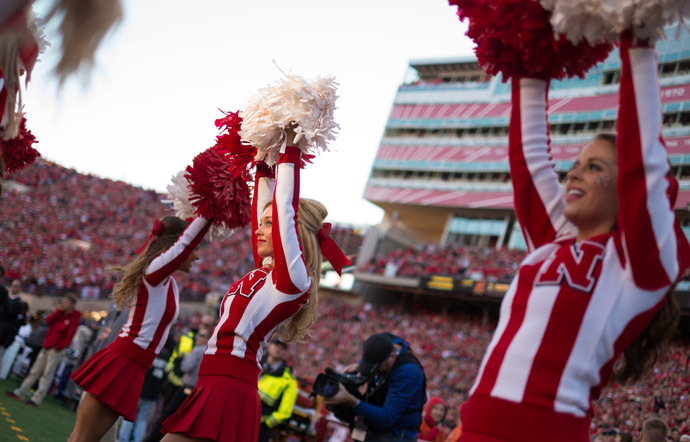
Live Long and Costly
Once the stadium is built and opening day is over, taxpayers continue to front money for years to come on maintenance and operation costs as well as city-wide functions necessary for game days such as traffic control.
Maintenance extends from deep below ground in the sewer system all the way up to electrical costs. The Minnesota Viking stadium cost a grand total of $950 million to build. City residents are expected to shell out an additional $7.5 million on maintenance costs.
And, when those stadiums need to be repaired or refurbished, that bill is once again addressed to the city. Earlier this year, the Carolina Panthers asked the state to pay $62 million for capital improvements, according to Charlotte Observer reporter Steve Harrison. Team owners want to renovate the 17-year-old Bank of America Stadium.The city of Charlotte will fork over an additional $125 on the promise that the Panthers will stay in the city for the next 15 years. Tack on top of that $15 million that the city would need to pay for maintenance and $375,000 for game-day traffic control and taxpayers are looking at quite a big chunk of change. Notably, all 32 NFL teams made Forbes’ list of the 50 most valuable sports franchises around the world with the Panthers claiming the 23rd spot.
A starker example of taxpayers footing the bill for renovation was brought about in the aftermath of Hurricane Katrina back in 2005. For days and weeks after the hurricane, hundreds of stranded families waited in the Superdome for FEMA’s help. The stadium acted as a symbol of the storm and the government’s disastrous response. Since that historic storm, taxpayers have coughed up $471 million to restore the superdome to its former glory.
If You Don’t Pay for it, They Will Leave…
Along with a long history of states offering incentives like tax breaks and stadium construction, there is also a long history of states refusing to fund these expensive stadiums and paying dearly for it. It has become somewhat of a tradition in professional sports for teams to threaten to leave if local governments refuse to write a check. In fact, many have left as a result.
Some of the most recent examples of teams playing chicken with local governments are the Minnesota Vikings threatening to leave in 2011 over stadium disputes and, this year, the Atlanta Falcons, St. Louis Rams and San Diego Chargers are all threatening to pack their bags if they don’t get what they want.
Interestingly, as part of the 1966 antitrust exemption Congress granted the NFL in its pursuit to merge with the AFL, the league agreed to a rule forcing all existing franchises to be retained, meaning there must be 32 at all times, and none of those teams were allowed to move outside of their metropolitan areas. So, how teams are traveling from city to city in the modern era remains somewhat of a mystery.
In the end, many cities and states are more willing to hand over millions and offer tax incentives to teams rather than risk losing them for good.
Post- Game Commentary
In the end, America may be too invested in sports to adequately address any of these issues, from the tax exempt status to subsidized stadiums to its unparalleled broadcasting privileges. Some of these issues affect taxpayers more than others but all reaffirm how deeply ingrained professional sports, or perhaps just professional football, are in our culture. Love it or hate it, 17 million viewers will still tune in from kickoff to the fourth quarter to take part in America’s most profitable tradition.













